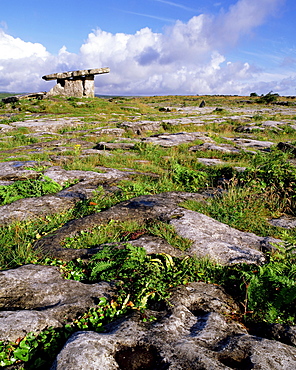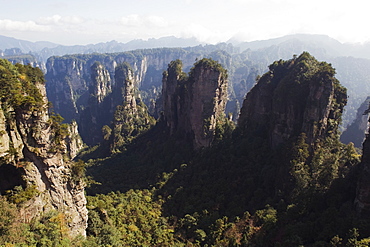Recent searches
Loading...
989-224 - 150 million year old fossilised footprint (ichnite) of theropod dinosaur in karst limestone rock, Terenes, Asturias, Spain, Europe
989-221 - Buelna beach and karst limestone El Picon rock pillar at high tide on a windy day, near Llanes, Asturias, Spain, Europe
989-227 - Castro de Gaviotas (Gull's fort) karst limestone rock archway, and La Canalina bay, near Llanes, Asturias, Spain, Europe
989-152 - Waterfalls cascade down the karst limestone cliffs of the Cirque de Gavarnie, Pyrenees National Park, Hautes-Pyrenees, France, Europe
1113-38809 - View from the Kyauk Ka Lat Pagoda on a rock, golden stupa in front of karst mountains, Kayin State, Myanmar, Birma, Asia
1113-31144 - Water buffalo pulling cart with hay and farmer, karst formations in the background, Shilin, Yunnan, People's Republic of China, Asia
1116-9235 - Karst Landscape; Fanore, County Clare, Ireland
1116-9236 - Karst Landscape; Fanore, County Clare, Ireland
1116-9306 - Karst-Landscape; The Burren, County Clare, Ireland
1116-852 - Poulnabrone Dolmen, The Burren, County Clare, Ireland
1109-94 - Limestone karst rocks at Phra Nang Beach, South Islands, Thailand, Southeast Asia, Asia
989-37 - Natural rock archway carved by the sea through karst limestone rock at Cuevas del mar (sea caves) beach, near Llanes, Asturias, Spain.
989-46 - Adiabatic clouds forming on the 1900m high karst limestone Bohinj Ridge Mountains in the Julian Alps, as rising air cools, with grasses and Dwarf pines (Pinus mugo) growing between areas of exposed rock, Triglav National Park, Slovenia.
989-33 - Thrift (Armeria maritima), Rock sea lavender (Limonium binervosum) and Coastal ragwort (Senecio leucanthemifolius) flowering on karst limestone sea cliffs at Pria, near Ribadesella, Asturias, Spain.
829-1005 - A man climbing down into a channel between the limestone karsts of the Grand Tsingy in Tsingy de Bemaraha National Park, UNESCO World Heritage Site, western Madagascar, Madagascar, Africa
829-1006 - View of the tourist hiking trail through the limestone karsts of the Grand Tsingy in Tsingy De Bemaraha National Park, UNESCO World Heritage Site, western Madagascar, Madagascar, Africa
829-1004 - Ladder leading down into a channel between the limestone karsts of the Grand Tsingy in Tsingy de Bemaraha National Park, UNESCO World Heritage Site, western Madagascar, Madagascar, Africa
733-3182 - Karst limestone rock formations at Zhangjiajie Forest Park, Wulingyuan Scenic Area, UNESCO World Heritage Site, Hunan Province, China, Asia
733-3181 - Karst limestone rock formations at Zhangjiajie Forest Park, Wulingyuan Scenic Area, UNESCO World Heritage Site, Hunan Province, China, Asia
733-3073 - Sunset over karst limestone scenery on the Li river (Lijiang) in Yangshuo, near Guilin, Guangxi Province, China, Asia
733-3072 - Karst limestone scenery on the Li river (Lijiang) in Yangshuo, near Guilin, Guangxi Province, China, Asia
733-3068 - Early morning mist clinging to karst limestone scenery around Yangshuo, near Guilin, Guangxi Province, China, Asia
733-3067 - Karst limestone scenery surrounding a village in Yangshuo, near Guilin, Guangxi Province, China, Asia
777-793 - Rock formations, The Burren, County Clare, Munster, Republic of Ireland, Europe
777-792 - Rock formations, The Burren, County Clare, Munster, Republic of Ireland, Europe
777-791 - Rock formations, The Burren, County Clare, Munster, Republic of Ireland, Europe
777-789 - Rock formations, The Burren, County Clare, Munster, Republic of Ireland, Europe
774-19 - Poulnabrone dolmen megalithic tomb, Burren, County Clare, Munster, Republic of Ireland (Eire), EuropeThe Burren (from Irish: Boireann, meaning - great rock) is a unique karst landscape in northwest County Clare, Ireland. The limestone area measures 300 square kilometres and is roughly enclosed within the circle comprised by the villages Ballyvaughan, Kinvarra, Gort, Corrofin, Kilfenora, Lisdoonvarna and the Black Head lighthouse. The definitive article (ie "The" Burren) has only been added to the name by academics in the last few decades as it has always been traditionally called Boireann or Boirinn in Irish and Burren in English.
83-11986 - 'Bacon strip' curtain formations at King Solomon's Cave in the Mole Creek Karst National Park, the north, Tasmania, Australia, Pacific
83-11981 - Stalactites at King Solomon's Cave in the Mole Creek Karst National Park, the north, Tasmania, Australia, Pacific
83-11988 - Stalactites, stalagmites and rimstone at Marakoopa Cave in Mole Creek Karst National Park, the north, Tasmania, Australia, Pacific
83-11982 - Stalactites, stalagmites and columns at King Solomon's Cave in the Mole Creek Karst National Park, the north, Tasmania, Australia, Pacific
83-11989 - Stalactites, stalagmites and columns at King Solomon's Cave in the Mole Creek Karst National Park, the north, Tasmania, Australia, Pacific
83-11983 - Stalactites and columns at King Solomon's Cave in the Mole Creek Karst National Park, the north, Tasmania, Australia, Pacific
83-11987 - 'Bacon strip' curtain formations at King Solomon's Cave in the Mole Creek Karst National Park, the north, Tasmania, Australia, Pacific
You reached the end of search results





































